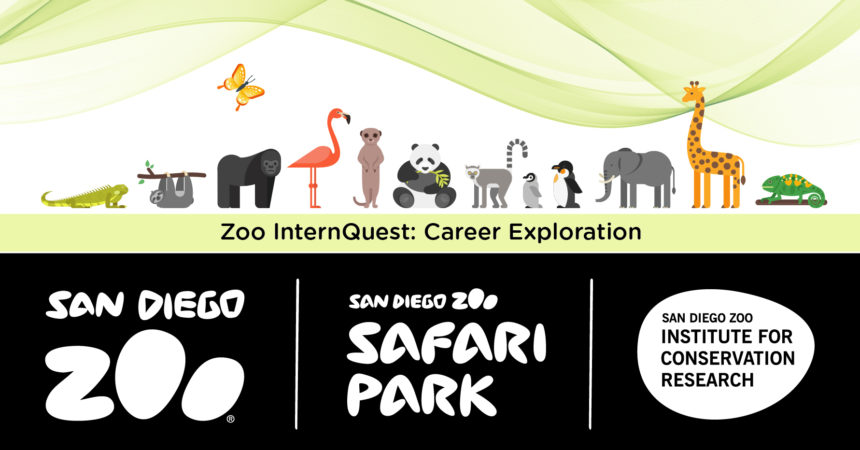Zoo InternQuest is a seven-week career exploration program for San Diego County high school juniors and seniors. Students have the unique opportunity to meet professionals working for the San Diego Zoo, Safari Park, and Institute for Conservation Research, learn about their jobs, and then blog about their experience online. Follow their adventures here on the Zoo’s website!

Back in 1982 there were only 22 California condors left in the wild—the largest flying bird in North America was on the brink of extinction. Today there are around 460 condors, with about 219 of them living in the wild. While California condors are still considered endangered, the extreme efforts of different organizations, like San Diego Zoo Global and its captive reproductive program, have helped immensely. California condors have even been released into five different sites in California, Utah, Mexico, and Arizona. In fact, if you keep your eyes open while visiting the Grand Canyon, you might just see one! This week interns met with Keeper Amanda Wert, who gets the privilege to work with these incredible birds that were almost gone forever.
Ms. Wert grew up in San Diego visiting the Zoo often, and her experiences left her with a clear idea that she wanted to work with animals. Ms. Wert began working towards this goal at Silliman University in the Philippines. From there, she obtained a Bachelor’s degree in Biology. Ms. Wert mentioned that most keepers at the Zoo have degrees in Zoology, however for those who don’t have a specific career in mind yet, a general degree like biology can be an amazing option. With careers in zoo keeping becoming more and more competitive, it is not a bad idea to think about getting a Master’s degree either, and a lot of the newer keepers at the Zoo have them.
After college, knowing that she wanted to work with exotic animals, Ms. Wert began a small internship working in avian food preparation at the Zoo. This is where her love for birds began. For any career at the Zoo, exotic animal experience is really great to have on your resume. There are a large variety of routes that a person can take to become a keeper, though. Ms. Wert actually began at the Zoo working in admissions, and worked her way up from there. After her internship, the Zoo trained her to become a keeper and the rest is history.
Today, Ms. Wert works in a variety of settings around the Zoo but works as the California condor keeper two days per week. Some of the activities that Ms. Wert might do in a day as a condor keeper are making their diets, cleaning, observing their behavior, and maintaining their exhibit—the last of which requires an enormous amount of patience since California condors really enjoy tearing up the plants in their exhibit. Ms. Wert joked that the worst part of her job is cleaning the cricket bins due to the smell, then stated that she dislikes seeing the birds that she works with become older as there’s no cure for old age. The best part of her job is the breeding aspect given that it is extremely exciting to have success in something that they haven’t succeeded in before. She would say that her work in avian breeding is one of the greatest accomplishments in her career to date, as well as becoming the California condor keeper.
Ms. Wert informed us that beginning the path to become a keeper by starting at an entry level position at the Zoo takes on average about 7 years and simply being in the right place at the right time. After being a Keeper for 5 years, Ms. Wert still considers herself new. She cannot imagine herself anywhere else, though, and stated that “this is where she belongs.” As for her work with California condors, Ms. Wert is extremely hopeful that within our lifetimes we will reach the goal of creating 2 or 3 independent and self-sustaining populations in the wild—which is really crazy to think about, given that condors were so very close to extinction.
Emma, Career Team
Week Five, Winter Session 2019


